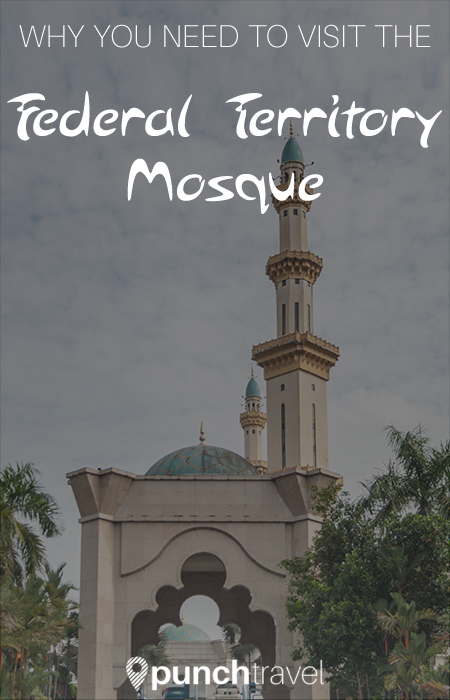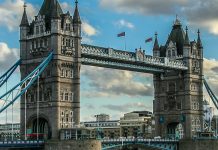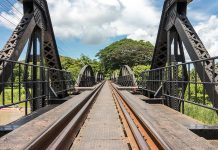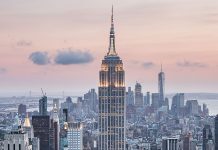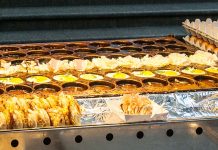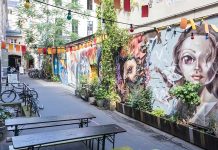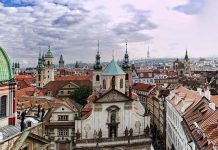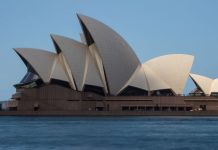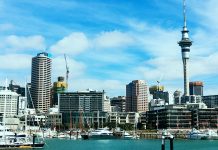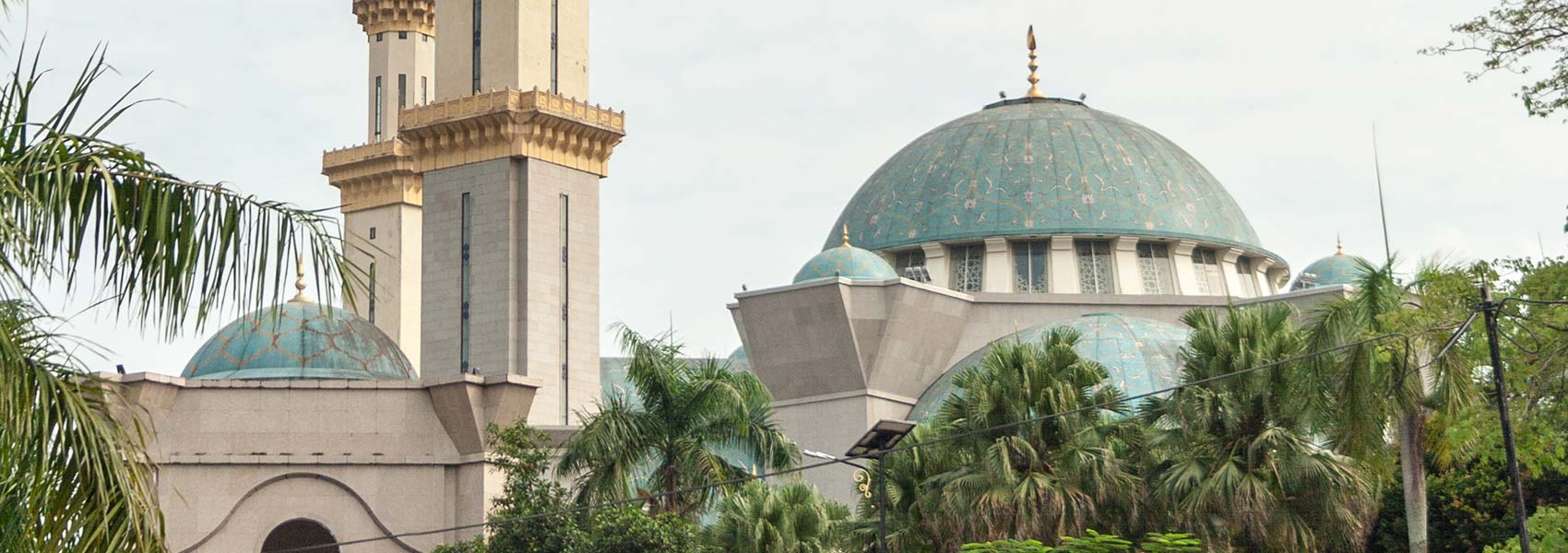I was on the 86th floor of the Petronas Towers, checking out the view from a tower viewer telescope in the corner.
I scanned the landscape, trying to find the rooftop pool of our hotel.
I spotted our hotel, but my gaze was distracted by a spectacularly lit mosque in the distance.
My curiosity piqued, I quickly went on Google Maps and identified the magnificent structure.
Opened to the public in 2000, Masjid Wilayah Persekutuan, also known as the Federal Territory Mosque, is the largest mosque in Malaysia. It sits on the top of a hill and covers 47,000 square meters.
The iconic structure is a mix of Islamic designs and architectural styles from Turkey, Moghul India, Morocco and others. The mosque features classic geometric patterns, intricate Arabic calligraphy and floral motifs. Two gleaming minarets stand tall among the domed rooftops.
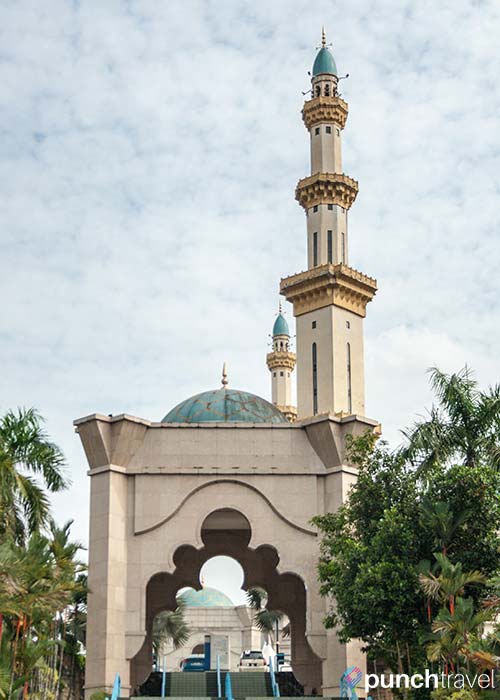
The mosque’s location is not easily accessed by the metro. Most visitors to Kuala Lumpur only visit the National Mosque, near Merdeka Square. Having now visited both mosques, I highly recommend taking the time to visit Masjid Wilayah.
Using our pocket wifi, we easily obtained an Uber to take us from our hotel in Chow Kit to the mosque. The ride is a quick jaunt up Jalan Kuching.
On the Saturday that we visited, the surrounding neighborhood was quiet and empty. During the week however, the area is busy with office workers at the nearby courthouse and MATRADE Exhibition and Convention Centre.
The visitor entrance of Masjid Wilayah is through Entrance B. We mistakenly entered through Entrance C, but a kind person quickly led us to the tour office. The Mosque Tour Program started in 2009 as a way to help tourists (and non-Muslims) learn about the mosque and gain a better understanding of the religion.

At Masjid Wilayah, volunteer tour guides are available daily from 10am – 6pm to take visitors on a guided tour. Several volunteers were in the office to greet us and then we paired up with our tour guides: Bob, Ridzuan and M Latif.
Before we began the tour, we first received an overview of the origins of Islam through a simplified genealogy chart of the 25 prophets mentioned in the Quran.
From there we headed to an ablutions hall, a place where Muslims must perform a purification ritual before prayer. Men and women’s areas are separate, but the one we entered was declared unisex for visitors for demonstration purposes.
We performed the purification ritual along with our guides. Taps are stationed in rows, and careful consideration is made to not waste water in the process, as per the prophet’s example. Bob showed Matt how to perform the purification ritual. The procedure includes washing the face, hands, arms, feet and ankles.
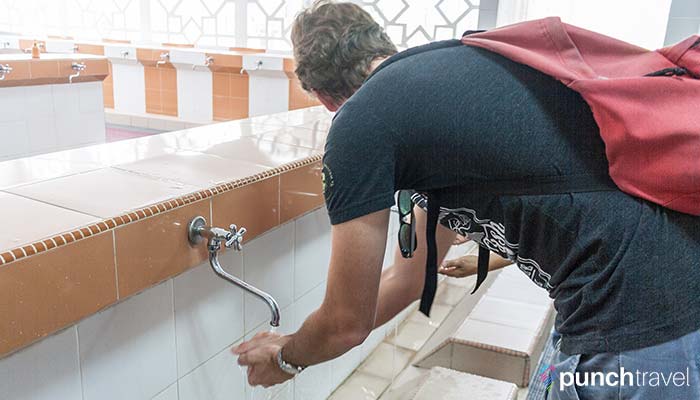
Once completed, we made our way to the prayer hall. The large wooden doors are covered in intricate floral carvings. The elegant door handles are made from local Malaysian pewter etched with flowers. The entire mosque is built from sleek white marble with geometric patterns carved into the facades. Surrounding the outside of the prayer hall, colorful inlays of semiprecious stones are embedded into the marble in beautiful designs and patterns.

Unlike the National Mosque, non-Muslim visitors are permitted to enter this prayer hall accompanied by an official tour guide from the Masjid Wilayah Mosque Tour Program. Visitors are invited to observe the congregational prayer should one be in progress during the visit. No congregation prayers were in session when we visited, but I saw many groups of people studying and praying.
The prayer room is immense. Bright domes cover the ceiling and the exterior of the domes are finished with turquoise-glazed tiles. The prayer hall can hold 7,000 worshipers and the entire mosque can accommodate up to 17,000 worshipers at a time.
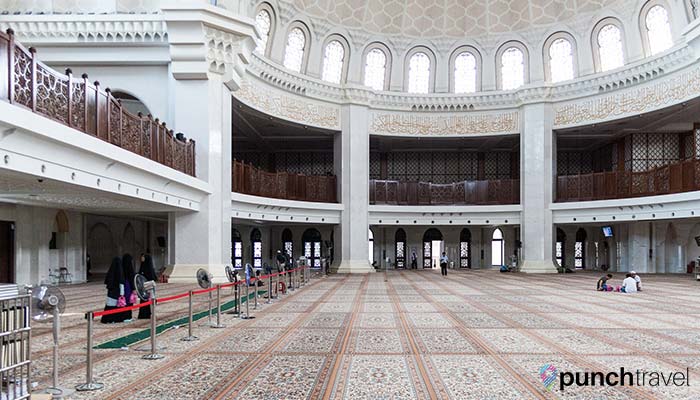
At the front of the hall is a large, decorated mihrab, the semicircular area where the imam leads the prayers. The mihrab is positioned in the mosque to indicate the qibla, the direction of the Kabba in Mecca and the direction that Muslims should face when praying. The mihrab is decorated with calligraphy of selected verses of the Quran and chapters 1 and 94 of the Quran in circular script. The colorful inscription is engraved using the same colorful stone inlays that are found on the outside of the prayer hall.
A large wooden minbar, or pulpit, next to the mihrab is where the imam delivers sermons whenever one needs to be delivered, such as part of the weekly Friday afternoon congregational prayers.
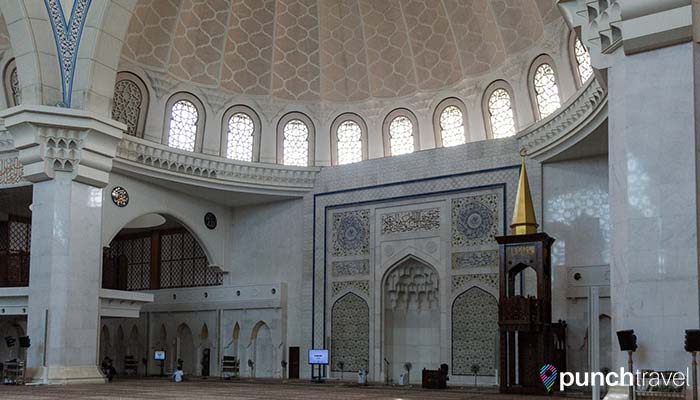
In the hall, Bob, Ridzuan and M Latif showed us the different prayer positions and the purposes of each. Our guides were each extremely knowledgeable in answering all of our questions on Islam and the Quran. For example, we learned that the Quran is in Arabic only, and cannot be translated into any other language. However as not everyone understands Arabic, any translations are considered only as the meaning of the Quran (as understood by the one doing the translation). Thus these translations should all carry the words “The Meaning of the Quran”.
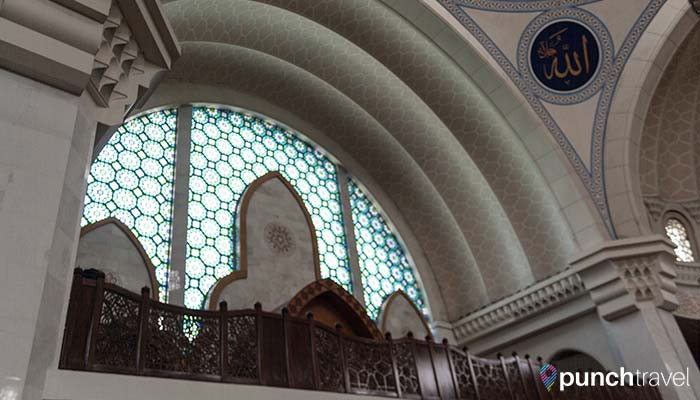
We exited the prayer hall to the main entrance overlooking the plaza, which provides open space within the mosque as well as overflow from the prayer hall if needed. In addition to being a place of worship, the mosque also serves as a community center, with classes for children and adults, and event space for weddings and other ceremonies.
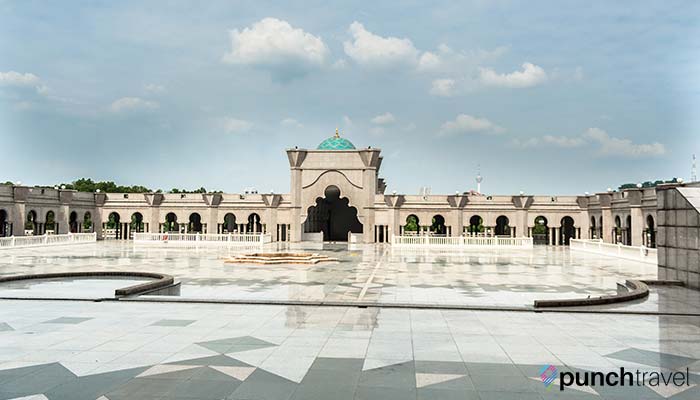
Speaking of weddings, we also checked out the several banquet halls within the complex. Surrounding the mosque is a moat and gardens, a prime spot for wedding photos.
Completing our tour, we regrouped back at the Mosque Tour Program office. Our guides kindly left us each with a bottle of water and souvenir, as well as reading materials to expand our knowledge.
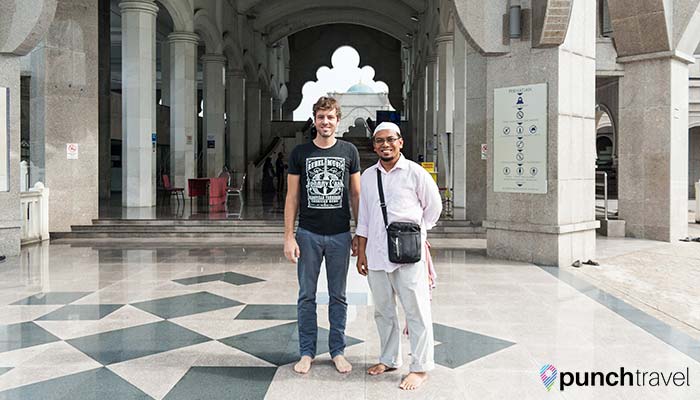
If you are visiting Kuala Lumpur, make sure to stop by Masjid Wilayah. It is a unique opportunity to see a beautiful mosque up-close and learn more about Islam and Muslim culture.
Getting to the Mosque
The mosque is not on the metro line, but is serviced by bus U83 from KL Sentral or bus B115 from Pasar Seni (Central Market). It is also a quick taxi or Uber ride from the city, and costs around RM 10. Plans are underway to include the mosque in the hop-on hop-off bus tour.
Tips for Visiting the Mosque
- Appropriate clothing is required when visiting a mosque. For men this means pants and loose shirt. Women should wear long skirts or pants, a long-sleeve shirt and a head scarf. Robes and head scarves are also provided in the tour office if needed.
- Photographs are permitted, but be respectful to those in the prayer hall.
- Shoes must be removed at the entrance to the mosque.
- Free guided tours are available from 10am to 6pm except on Eid Fitri and Eid Adha holidays.
Pin it!
